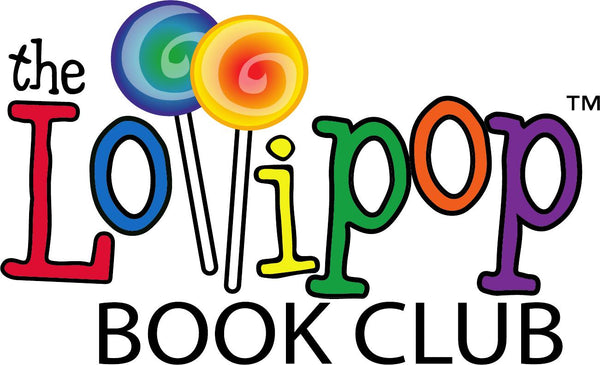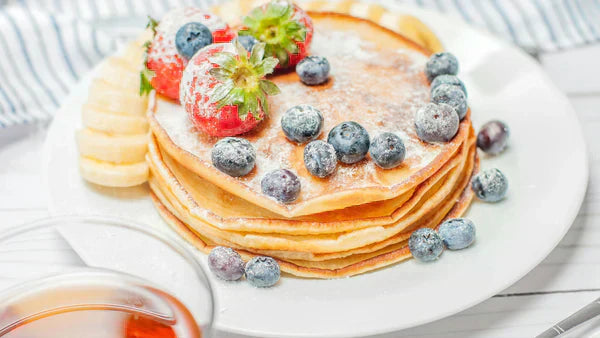Pancakes are more than just a breakfast food; learning about them is a blast because they offer a delicious mix of history, culture, and science. The facts are often surprising and connect us to traditions from around the globe. Imagine a food that has been a staple for thousands of years, with evidence of early forms being eaten by the ancient Greeks and Romans! This rich history and global presence make every bite a journey through different culinary traditions. Here are some quirky pancake facts including crazy contests, wacky history, incredible records and more to share with little ones next time you are gathered around the table getting ready to dig into a plate of hotcakes!

Everything Kids Want to Know About Pancakes
Kids who love hotcakes will enjoy learning everything they can about their favorite breakfast food. One of the best things about this household staple is the long shelf life of the ingredients and the ease in which to make them. Whenever kids are hungry for a snack or meal, almost every kitchen is stocked with the necessities to whip up a batch of delicious pancakes. Children's books about pancakes are fun to add to the story time for little foodies. Served piping hot and topped with syrup, these piles of goodness are the perfect start to every day. Ever versatile, they can be enjoyed as a delicious dessert drizzled in chocolate sauce and a dollop of whipped cream. Continue reading to learn about the history of pancakes, how many Americans consume every year, all the different varieties, and more information to tempt the taste buds.
Fascinating Pancake History and Trivia
Children love learning about pancake history and trivia because it transforms a familiar breakfast food into a fun and surprising lesson about the world. For them, it's exciting to learn that a dish they eat today has a history stretching all the way back to the ancient Greeks and Romans. This helps them see how a simple meal is part of a larger, global story. They can discover unique pancake traditions from different cultures, such as the thin French crêpe or the savory Russian blini. Additionally, pancake trivia is packed with fun, record-breaking facts that kids find fascinating. The sheer scale of the world's largest pancake or the speed of the fastest flipper makes the topic instantly memorable and entertaining. On top of the history, pancake facts include silly, record-breaking events that really stick with a child. The sheer scale of the world's largest pancake or the fastest pancake flipper makes the topic instantly memorable and entertaining.

(1) People in the south eat the most pancakes.
According to recent surveys, approximately 33% of all consumption occurs in the southern states. Even more interesting, Myrtle Beach, South Carolina, has more pancake houses than any town in the country. There are more than ten restaurants serving up hotcakes every two miles.
(2) Aunt Jemima was first sold in stores in the late 1800s.
The Pearl Milling company produced this ready-mix food, the first of its kind when it hit the shelves in Missouri. In 2020, parent company Quaker Oats rebranded the pancake mix, recognizing the stereotype associated with racial inequality. Aunt Jemima, reminiscent of a "mammy" from the south, is a reminder of the Jim Crow era when segregation and discrimination was at its height. The original face of the brand was based on Nancy Green, a Civil War-era slave from Tennessee.
(3) Biggest pancake weighed 6,614 pounds.
This monstrosity was concocted in Manchester, England in 1944. Measuring 49 feet in diameter, 1 inch thick, and weighing in at 6,614 pounds, the concoction met the qualification standards of being both flipped and edible. The Co-Operative Union based in Manchester, England created this behemoth hotcake on August 13, 1994, landing them a Guinness World Record. This gigantic pancake was eventually sliced into 15,000 pieces and sold to everyone who gathered around to raise money for charity.

(4) Most expensive pancake costs more than $1,300.
The Opus One restaurant in the Radisson Blu Edwardian Hotel a sells a culinary experience which includes lobster, caviar, and Dom Perignon champagne. Next time you visit London, stop by this famous restaurant to check out this outrageous menu item. Others have gained recognition for their exorbitant price tag. For instance, Serendipity 3 in NYC sells a concoction called Caviar Dreams for $3000. The base, a buttermilk pancake, is not especially expensive. However, when topped with Russian Ossetra caviar, Scottish smoked Salmon, and maple syrup with 24 carat gold flakes, the price tag soars sky high.
(5) Romans are credited with making the first pancake.
Historians have traced the origins of this food back to the 1st century CE where the people mixed together milk, flour, eggs, and spices to create the original hotcake. Honey was also believed to be utilized as a sweetener. However, some believe pancakes can be traced back to the Stone Age, where flour made from cattails and ferns was mixed with water and set out on rocks to cook under the hot sun. While the result was a far cry from the delicious crepes and hotcakes we enjoy today, the concept of preparing and frying batter was the same.
(6) Pancake Day is the day before Ash Wednesday.
This day was first recognized in 600 AD when the Pope encouraged people to get rid of all meat or animal related products during the Lent season. Not wanting to toss out valuable food items, families tossed together eggs, milk, flour and butter in order to get a few additional meals before the period of abstinence began.
(7) More than 75 billion pancakes are consumed annually in the United States.
Approximately 2.5 tons of hotcakes are enjoyed by Americans annually. Surveys have shown that 12% of the population eat them every single week, while 29% eat them every two weeks. IHOP sells a whopping 700 million units per year.
(8) There are two different types of pancakes.
The most common type of pancakes consumed are typically served at breakfast. These thick, fluffy American-style version can be whipped up from scratch using common ingredients stocked in most kitchens- flour, baking powder, sugar, eggs, milk, butter, salt, and on special occasions, chocolate chips. They are usually topped with maple syrup or fresh fruit. A thinner, crispier version of pancakes, called crêpes, originated in France. This delicious version is usually filled with sweet or savory foods. Sweeter versions are often. stuffed with whipped cream, fresh fruit, and a hazelnut or chocolate spread. Savory options include filling crêpes with a variety of cheese, meat, or even vegetables.
(9) William Shakespeare loved pancakes.
The most famous playwright who ever lived had a fondness for pancakes. He loved this food so much, in fact, that he made mention of them in two of his plays- As You Like It and All's Well That Ends Well. Instead of maple syrup, the characters in his plays are served pancakes with mustard, feeding a debate as to whether his preferred version is more of a savory type made with beef and served on Shrove Tuesday. He also alludes to superstitious beliefs, referencing ingredients consisting of flour, eggs, and "tragical, magical enchantments".
(10) The world record is 113 pancakes eaten in 8 minutes.
In 2016 at The World Silver Dollar Pancake Eating Championship, Matt Stonie crushed the previous record by scarfing down 113 hotcakes. Spectators in Chico, California cheered on the professional eater as he crushed to beat the clock walked away a champion. Of course, these hotcakes were served without butter or syrup!
(11) Pancake Syndrome is an actual medical diagnosis.
The official medical term is oral mite anaphylaxis. It's a rare condition that usually only occurs in tropical and subtropical countries as a result of consuming flour contaminated by mites. Symptoms include runny nose, hives, difficulty swallowing, wheezing and coughing. When flour is stored at room temperature, mites can easily grow. For this reason, it is suggested that flour is refrigerated in sealed containers.

The Lollipop Book Club is a participant in the Amazon Services LLC Associates Program, an affiliate advertising program designed to provide a means for sites to earn advertising fees by advertising and linking to amazon.com.






